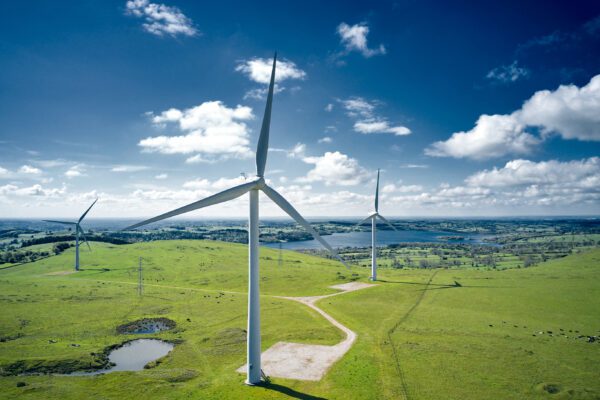
Spotlight on: The Energy Horizon
While the coronavirus pandemic has impacted some of the work streams the Government planned to deliver this year, the UK’s net-zero target isn’t on hold, so businesses should be prepared for a number of changes to policies and schemes in the next twelve months – some more welcome than others. The good news is that […]
While the coronavirus pandemic has impacted some of the work streams the Government planned to deliver this year, the UK’s net-zero target isn’t on hold, so businesses should be prepared for a number of changes to policies and schemes in the next twelve months – some more welcome than others.
The good news is that there’s a raft of new consultations, schemes and funding available to help businesses adapt to our constantly evolving energy system. In this blog, we’ll cover some of the most important changes coming up this year, so businesses can prepare for the opportunities and challenges that lie ahead.
This year, businesses can expect to see…
New policies to support net-zero
The government has granted an additional £10m to support design and delivery of net-zero policies and programmes this financial year. This funding will be used to design and develop policies aimed at turning net-zero from an ambition to something with definition and workable implementation plans.
Businesses can expect to see a number of new net-zero policies towards the end of this financial year, and some of these have already been announced in the latest Budget. Over the next 5 years, for example, £500m in funding will be dedicated to improving the UK’s EV charging infrastructure. This will include a rapid charging fund to help businesses with the cost of connecting high-powered charging points to the electricity grid.
The Government will also be increasing pressure on businesses to become more sustainable from April 2022, when they will introduce measures to bring in a plastic packaging tax of £200/tonne. The allowance on red diesel will also be abolished from April 2022, except for red diesel used for agricultural, rail and non-commercial heating purposes. Construction companies that use red diesel in plant machinery will not be exempt, so they will need to be prepared for this change.
An increased focus on heat
Heating currently accounts for around a third of the nation’s greenhouse gas emissions and has so far been one of the hardest areas to decarbonise. Therefore, businesses can expect to see the introduction of a number of initiatives focused on reducing heating emissions in the next few years.
The Government is currently consulting on the best ways to support the transition to low-carbon heat. Part of the consultation proposes a green gas support scheme – the New Green Gas Levy – to help fund support for biomethane production. What this scheme will look like and what the levy will be set at is subject to a further consultation, but if approved, the Levy will be implemented and passed onto businesses’ bills from autumn next year.
The consultation also outlines plans to help businesses to replace fossil-fueled boilers with heat pumps or biomass boilers under a Clean Heat Grant. As this is a grant and not a loan, businesses that are planning a low carbon heating upgrade should definitely look into this scheme, which will be backed by £100m in funding and is expected to come in from April 2022 for an initial period of 2 years. Until then, the Government will be introducing a new allocation of flexible tariff guarantees to the Renewable Heat Incentive (RHI) from April 2021, which should help to provide some investment certainty for larger renewable heat projects.
Ongoing benefits from the CCA
The Climate Change Agreement (CCA) scheme is currently scheduled to end on 31st March 2023, but it’s been so successful that the Government has proposed to extend the scheme to 2025. They have put forward plans for a new target period between January 2021 and December 2022, meaning eligible businesses will be able to claim the CCL discount between July 2023 and March 2025. If this is approved, the next certification period will run until July 2023 rather than March 2023, so there’s no gap in support for energy-intensives.
Businesses that aren’t currently participating but think they might be eligible should look into this now, because new participants will be able to enter the new target period in January. The baseline year for new entrants will be 2018, so organisations that have implemented any energy efficiency measures since then or will be doing so in the near future could stand to save on the CCL. Applications are open now, and they close on 30th November 2020, so businesses should act now to see if they’re eligible.
With the CCL rate on gas set to rise year-on-year as the Government strives to rebalance gas and electricity rates, most businesses will see their energy bills rise (apart from those using high-efficiency CHP, who will benefit from financial relief). This will only make the CCL discount more valuable for CCA participants – so those that think they might be eligible need to apply now.
Changes to the CfD
There’s another ongoing consultation on proposed changes to the Contracts for Difference (CfD) scheme. One of the key elements proposed in this consultation involves allowing onshore wind across Great Britain and solar to apply for the CfD again in 2021.
The consultation also proposes that during periods of negative pricing, payments will be set to zero for the entirety of the period, which removes any incentive on CfD generators to export power to the grid when there’s an oversupply in the market. This is a necessary move because the amount of renewables online means that negative pricing periods are much more common now than when the scheme was first introduced, so they’ve got to take action to restrict these dips. However, it’s likely these changes will continue to increase businesses’ bills, although as the agreed strike price is falling there’s some hope that CfD costs will rise more slowly than they have been in recent years.
Opportunities for flexible users
Ofgem’s Network Access and Forward-Looking Charges Review is looking into the way businesses connect to (and pay for their connection to) the distribution networks, and it has set out some initial steps for distribution costs to be calculated based on time of use (with dynamic pricing according to how much constraint on the system at a particular time). The review is expected to conclude later this year, so businesses that have previously considered investment in demand management capabilities and smart assets but have not been able to build a business case for doing so should definitely reconsider doing so now.
Businesses with generation assets that are connected to distribution networks (that aren’t already participating in the Balancing Market) could also benefit from National Grid’s new commercial product, Optional Downward Flexibility Management. National Grid is predicting a significant oversupply of electricity this summer, which could lead to outages. To avoid this, they are going to pay businesses with embedded generators to turn them off for around 3-9 hours at a time. Initial trades took place at around £80/MWh, so organisations that have embedded generation and the capability to be flexible could boost their revenue through Optional Downward Flexibility Management.
A changing attitude to compliance
While compliance with energy regulations has often been seen as a burden by businesses, as we move toward net-zero it’s likely that many will realise the opportunity that efficiency regulations such as the Streamlined Energy and Carbon Reporting scheme represent.
Savvy businesses are already seeing compliance as a useful tool rather than a simple tick-box exercise, particularly as the first major batch of SECR reports will soon become publicly available. A crucial element of SECR is the public nature of the reports, which makes it easy for an organisation’s key stakeholders to see how much energy they are using, the carbon emissions associated with this usage and the efforts they are making to reduce their carbon footprint. Businesses that only do the bare minimum could therefore put their reputations at risk, while those who take real action to reduce their emissions could significantly boost their sustainability credentials.
It’s therefore likely that we’ll continue to see a shift in organisations’ attitudes towards energy reporting, as more businesses recognise that they must take action on their reports rather than simply filing them away once they’ve achieved compliance. As SECR is likely to remain a key compliance scheme for many years, it’s also likely that it will be extended to more businesses, and that even more organisations will comply voluntarily in order to demonstrate their sustainability.
Stay ahead of the curve with Inspired Energy
At Inspired Energy, we know that for many businesses, staying up to date with the latest changes to energy policies and regulations can be complex and time-consuming – and perhaps even more so in the current circumstances. That’s why our experts are constantly scanning the energy horizon for our customers, so they’re always prepared to make the most of any opportunities that present themselves and overcome any challenging changes.
If you’d like to talk to one of our experts about how any of the above changes could impact your business, please email us on [email protected] or call 01772 689 250.










